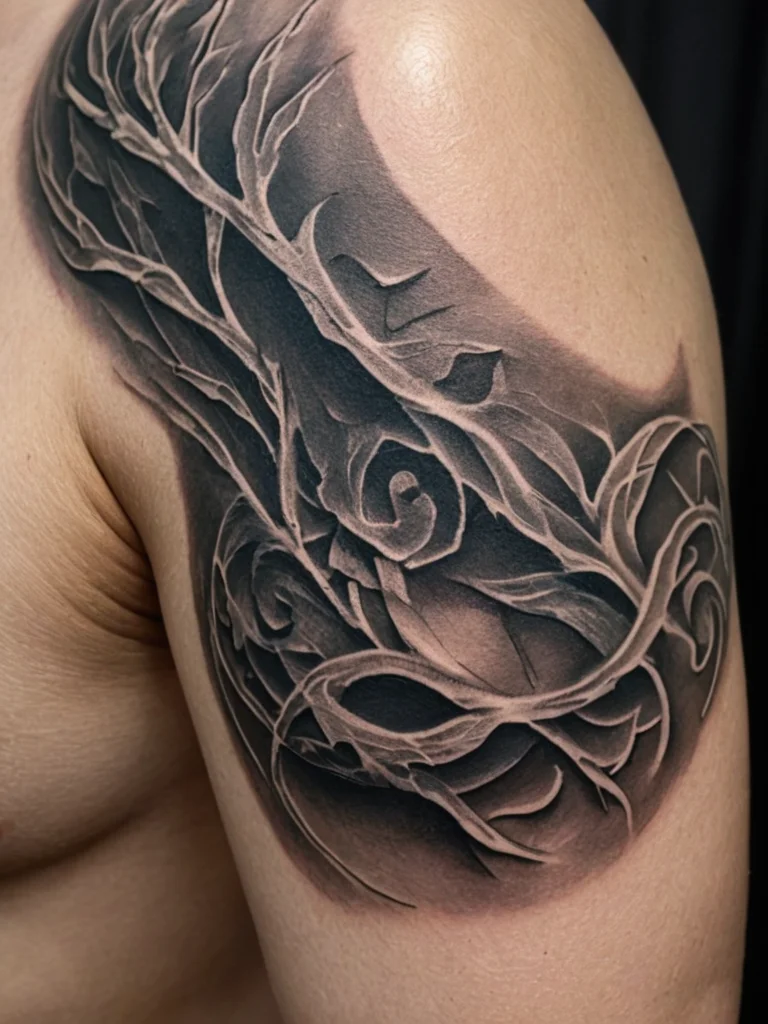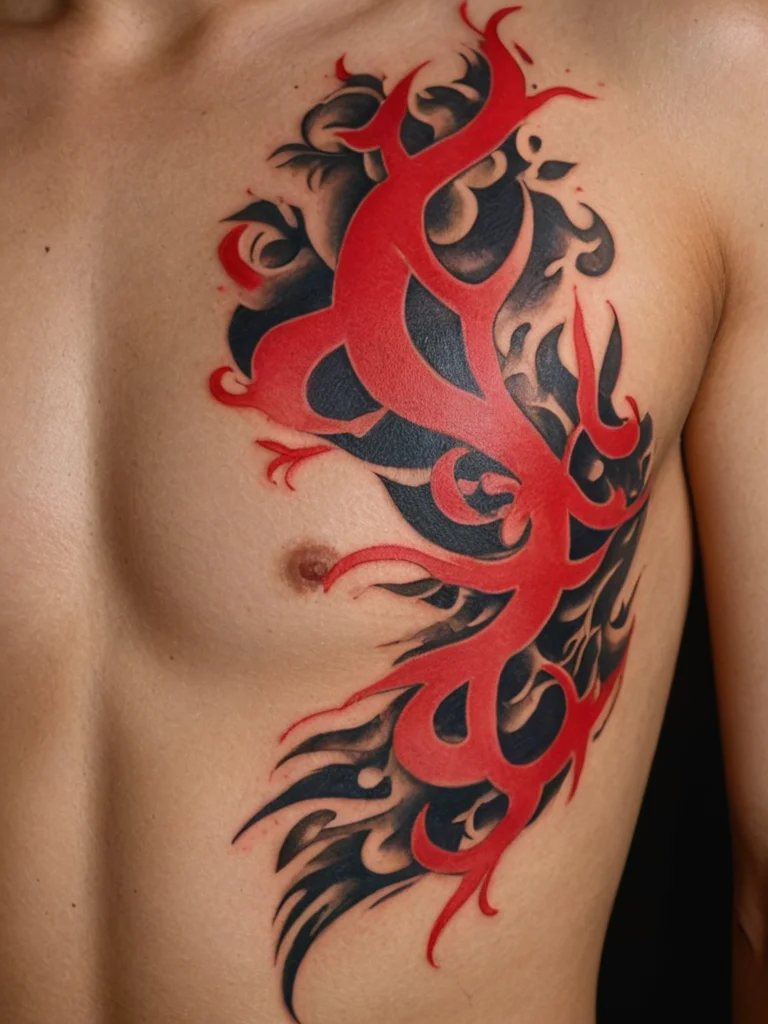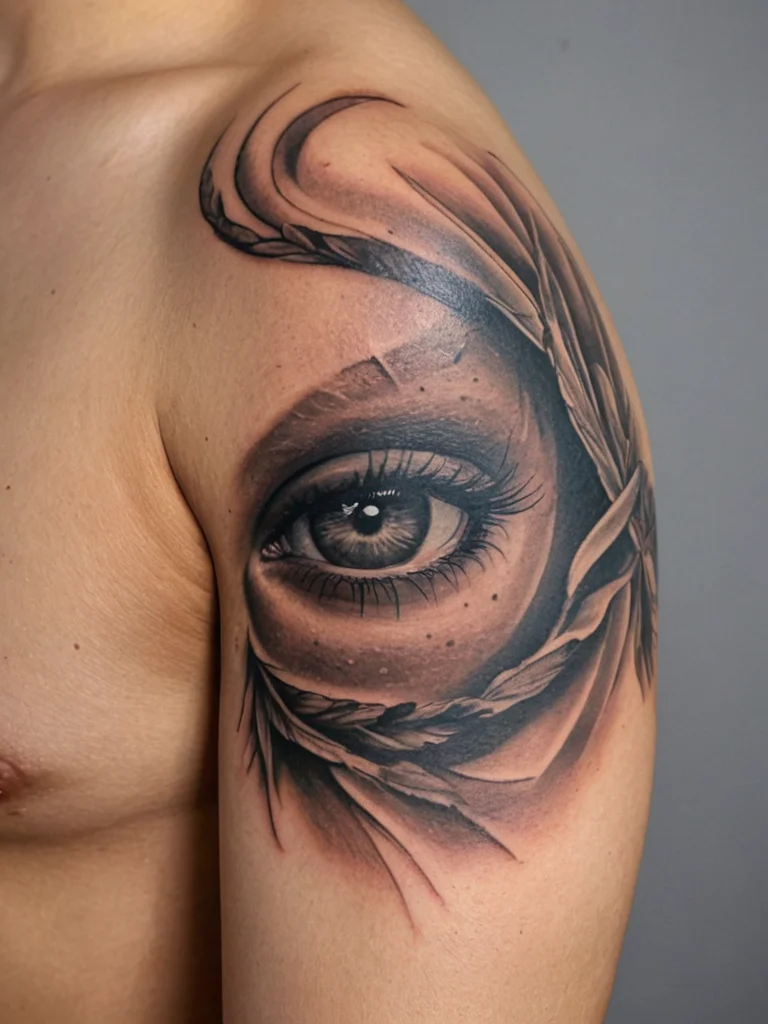Debunking the top 10 myths about tattoos and health
The world of tattoos is rich with artistry, personal expression, and deep cultural significance. For centuries, people have adorned their bodies with ink, creating living canvases that tell stories, mark milestones, and celebrate identities. However, alongside this vibrant culture, a cloud of misinformation has often hovered, particularly concerning the health aspects of getting tattooed. As enthusiasts and artists alike delve deeper into this fascinating art form, it becomes increasingly crucial to separate fact from fiction. This article aims to demystify common concerns, providing you with accurate, science-backed information so you can approach your tattoo journey with confidence and peace of mind. We’ll explore some of the most persistent myths surrounding tattoo health, from the safety of the inks themselves to the realities of healing and removal, guided by expert insights and a commitment to clarity.
Many of us have heard whispers or read sensationalized claims about the potential dangers of tattoos. These myths, often born from outdated information or a general misunderstanding of the processes involved, can create unnecessary anxiety for those considering their first tattoo or for seasoned collectors alike. It’s important to remember that while any body modification carries some inherent risk, responsible practices and modern advancements have significantly mitigated many of these concerns. Tattoo artists, often the first point of contact for many exploring this art, are at the forefront of ensuring safety and providing accurate guidance. By understanding the truth behind these pervasive myths, you can make informed decisions, ensure your health is prioritized, and fully embrace the incredible world of tattooing.
Myth 1: Tattoo ink causes cancer – the scientific truth

One of the most persistent and alarming myths surrounding tattoos is that the inks used are inherently carcinogenic and lead to cancer. This fear often stems from early concerns about the chemical composition of some pigments. Historically, tattoo inks were sometimes derived from industrial-grade pigments, some of which contained heavy metals. However, the tattoo industry has evolved dramatically. Today, reputable tattoo inks are specifically manufactured for cosmetic use and are subject to stringent regulations in many parts of the world, including Europe and North America. These inks are typically composed of pigments derived from organic compounds or specially processed inorganic compounds. While early studies might have raised questions about certain pigments, more recent and comprehensive scientific research has largely debunked the direct link between modern, regulated tattoo inks and cancer. Regulatory bodies like the FDA, while not directly approving tattoo inks as they would drugs, do oversee their safety and composition. Reputable tattoo artists exclusively use inks from established manufacturers that adhere to strict safety standards, ensuring that the pigments are sterile and formulated to minimize potential adverse reactions. The pigments are encapsulated within the skin’s dermis, a layer that is well-protected by the body’s natural defenses, and they do not migrate to other organs in a way that would typically promote cancer development. It is essential to choose a professional artist who prioritizes hygiene and uses high-quality, certified inks. Always ask your artist about the brands they use and their commitment to safety protocols. The scientific consensus, based on extensive research, is that the risk of cancer from modern tattoo inks, when applied by a licensed professional using sterile equipment and compliant inks, is extremely low and not supported by current evidence.
Myth 2: Getting a tattoo leads to skin infections – understanding risks and prevention

The concern about skin infections following a tattoo is understandable, as the process does involve breaking the skin’s barrier. However, the myth that getting a tattoo inevitably leads to infection is largely a misunderstanding of how infections are contracted and prevented. Infections associated with tattoos are almost always a result of poor hygiene practices, either on the part of the artist or the client, or the use of contaminated equipment and inks. Reputable tattoo studios operate under strict health and safety regulations. This includes using single-use, sterile needles and tubes, sterilizing all non-disposable equipment in an autoclave, ensuring a clean working environment, and following proper hand hygiene protocols. Furthermore, tattoo artists are trained to provide thorough aftercare instructions to their clients. Adhering to these instructions – keeping the tattooed area clean, avoiding soaking the wound, and refraining from picking at the scabs – is crucial for proper healing and preventing infection. When these guidelines are followed, the risk of infection is minimal. The primary way to prevent any risk is to choose a licensed, reputable tattoo studio that demonstrates a commitment to hygiene. Look for studios that visibly follow sterilization procedures, use disposable products, and have a clean, professional appearance. Discuss their sterilization methods and hygiene standards with them. If an infection does occur, it is typically bacterial and treatable with antibiotics, but prevention through careful studio selection and diligent aftercare is always the best approach.
Myth 3: Tattoo removal is painful and scarring – what to expect from modern methods

The idea that removing a tattoo is a guaranteed ordeal of intense pain and permanent scarring is another common misconception, largely based on outdated removal techniques. While tattoo removal is not entirely pain-free, modern methods have made the process significantly more manageable and less likely to cause significant scarring than ever before. The most common and effective method today is laser tattoo removal. This technique uses specific wavelengths of light to break down the ink particles in the skin. The lasers target the pigment, causing it to shatter into smaller fragments that the body’s immune system can then gradually clear away. The sensation during laser removal is often described as similar to being snapped by a rubber band or a hot pinprick, and the intensity can vary depending on the individual’s pain tolerance, the size and colors of the tattoo, and the laser technology used. To manage discomfort, clinics typically offer cooling systems, topical numbing creams, and sometimes local anesthetic injections. Regarding scarring, when performed by trained professionals using appropriate laser settings, the risk of significant scarring is very low. The laser targets the ink, not the surrounding skin tissue, minimizing damage. However, improper use of lasers or picking at the treated area during healing can increase the risk of scarring. Multiple sessions are usually required for complete removal, with healing occurring between sessions. Other removal methods, like surgical excision (for very small tattoos) or dermabrasion, are less common today due to higher risks of scarring and longer recovery times. Therefore, while discomfort is a factor, it’s manageable, and with the advancements in laser technology and skilled practitioners, the fear of severe scarring is largely unfounded for most individuals seeking to remove unwanted ink.
Myth 4: You can’t get a tattoo if you have certain skin conditions

It’s a prevailing myth that individuals with common skin conditions like eczema, psoriasis, or acne are completely barred from getting tattoos, or that tattooing will inevitably worsen these conditions. While it’s true that certain skin conditions require careful consideration and consultation with both a dermatologist and a tattoo artist, it doesn’t mean tattoos are off-limits entirely. The key lies in managing the condition and choosing the right approach. For conditions like eczema and psoriasis, which involve inflammation and compromised skin barriers, it’s crucial to get tattooed on skin that is currently clear of active flare-ups. Tattooing over inflamed or irritated skin can exacerbate the condition and lead to poor healing or increased risk of infection. Artists often recommend waiting until the skin is calm. Some individuals with these conditions may also experience a phenomenon known as the Koebner response, where trauma to the skin (like tattooing) can trigger the appearance of lesions. However, this doesn’t happen to everyone, and many people with these conditions have successfully received tattoos without issue. Similarly, for acne, while tattooing directly on active, inflamed pustules should be avoided, getting tattooed on clear skin areas is generally safe. In fact, some people find that the tattoo process itself doesn’t trigger their acne, while others might experience a minor, temporary breakout due to the skin’s response to the trauma. The most important step is open communication: consult with your dermatologist before getting tattooed to understand how your specific condition might affect the process and healing. Then, discuss your condition openly with your chosen tattoo artist, who can advise on the best placement and timing, and ensure they are aware of any potential sensitivities. Modern sterile techniques and attentive aftercare can help mitigate risks, allowing many individuals with previously considered “problematic” skin to enjoy tattoos.
Myth 5: Tattoo ink migrates throughout the body causing systemic problems

A widespread concern, often fueled by sensationalist headlines, is that tattoo ink particles are microscopic enough to travel throughout the bloodstream and lymph system, eventually accumulating in vital organs and causing widespread health issues. The scientific reality, however, paints a much more contained picture. When a tattoo needle deposits ink into the dermis, the layer of skin beneath the epidermis, the pigment particles are relatively large. They are then engulfed by specialized cells called macrophages, which are part of the body’s immune system. These macrophages essentially trap the ink particles, forming localized deposits within the skin. While some pigment can be transported via the lymphatic system, this is primarily a localized process, moving ink particles to nearby lymph nodes, which act as filters for the body. Extensive research, including studies analyzing lymph nodes near tattooed areas, has confirmed the presence of ink pigments there. However, there is currently no substantial scientific evidence to suggest that tattoo ink particles migrate from the lymph nodes to distant organs like the liver, kidneys, or brain in significant amounts, or that this migration causes systemic diseases. The particles are generally too large to freely circulate in the bloodstream and are contained within immune cells in the skin and local lymph nodes. The body’s immune response, while containing the ink, also works to keep it localized. Therefore, the notion of ink “spreading everywhere” and causing widespread organ damage is largely an exaggeration. The focus remains on ensuring the ink is safely deposited into the dermis by a professional and that the initial healing process is managed correctly to prevent localized infections.
Myth 6: You’ll regret your tattoo – focusing on longevity and decision-making
While not strictly a health myth in the biological sense, the fear of “regretting” a tattoo is a significant psychological concern that often prevents people from pursuing body art. The idea that most tattoos are regretted is a pervasive myth that overlooks the intentionality and planning that goes into modern tattooing. While yes, some people may eventually wish to alter or remove a tattoo, this is far from a universal experience. Tattoo artists, as professionals who guide countless individuals through their tattoo journeys, often emphasize the importance of thoughtful decision-making. This involves choosing designs that hold personal meaning, selecting an artist whose style aligns with your vision, and considering placement carefully, taking into account visibility and personal lifestyle. Many people who initially worry about regret find that their tattoos become cherished parts of their identity, evolving with them over time. The rise of sophisticated cover-up techniques and advanced laser removal methods also means that even if a tattoo no longer resonates, options for change are readily available, reducing the permanence of potential regret. Furthermore, the cultural acceptance of tattoos has grown exponentially, meaning tattoos are less likely to be seen as unprofessional or detrimental to one’s career or social life than in the past. The best way to mitigate the risk of regret is through thorough research, careful consideration of design and placement, and choosing an artist you trust. If a tattoo is a meaningful expression of who you are, the likelihood of regret diminishes significantly, transforming it from a potential burden into a source of enduring pride.
Myth 7: Tattoos interfere with medical procedures like MRIs
A fascinating, though largely unfounded, myth suggests that tattoos can cause adverse reactions or interfere with medical imaging technologies, particularly Magnetic Resonance Imaging (MRI). This concern often arises from the fact that some older tattoo inks, or inks used in certain cosmetic procedures, might contain metallic components. However, modern tattoo inks are predominantly made from organic compounds or highly purified inorganic pigments, with metallic content being extremely rare in inks specifically manufactured for body art today. When MRIs are performed, powerful magnetic fields and radio waves are used. If metallic particles were present in the tattoo ink, there is a theoretical possibility of minor heating or slight image distortion around the tattooed area. Numerous studies and clinical observations have addressed this. In the vast majority of cases, tattoos, even older ones, do not cause any issues during an MRI. Reports of adverse reactions are exceptionally rare and often linked to tattoos with unverified ink compositions or permanent makeup procedures where metallic pigments might have been used. Reputable tattoo artists use inks that are formulated to be safe and generally free of metallic compounds that would react with MRI technology. If you have concerns, especially if your tattoo is very old, from an unknown source, or has a metallic sheen, it is always wise to inform your doctor or the MRI technician before the procedure. They can assess the situation, and in extremely rare cases, they might opt for a different imaging modality or take extra precautions. However, for the average person with modern tattoos, interference with MRIs is not a realistic concern.
Myth 8: Tattoos increase sensitivity to sunlight
The idea that having tattoos makes your skin significantly more sensitive to sunlight, leading to quicker or more severe sunburns, is another myth that doesn’t hold up to scientific scrutiny. While it’s true that any skin, tattooed or not, can be damaged by excessive sun exposure, tattoos themselves do not inherently alter the skin’s fundamental relationship with UV radiation in a way that dramatically increases sensitivity. The pigments are deposited in the dermis, deep beneath the epidermis where most direct sun interaction occurs. While UV rays do penetrate to the dermis, they don’t typically cause the ink pigments to become hyper-reactive or to ‘burn’ the skin more easily. What can sometimes lead to this perception is that tattooed skin, especially when newly healed or if the ink has faded, might appear slightly darker or the texture might be subtly altered, leading one to believe it absorbs more heat or light. However, the primary factor for sunburn and sun damage remains the skin’s natural melanin production and its exposure time to UV radiation. The most important advice for anyone with tattoos, regardless of this myth, is to practice responsible sun protection. Always use sunscreen with adequate SPF on your tattoos to protect both the ink longevity (preventing fading) and the health of your skin. This is standard advice for all skin, but it’s particularly relevant for preserving the vibrancy of your artwork. So, while tattoos don’t fundamentally change your skin’s UV sensitivity, treating tattooed skin with care and protection is always recommended.
Myth 9: You can’t donate blood if you have a tattoo
This is a classic myth that has roots in past public health concerns but is largely outdated due to modern screening and regulations. Many people believe that a tattoo automatically disqualifies them from donating blood. In reality, most blood donation centers in developed countries have specific waiting periods after receiving a tattoo rather than an outright ban. The reason behind this policy is to ensure that there is no risk of transmitting bloodborne infections like Hepatitis B or C, which could potentially be transmitted if sterile equipment was not used during the tattooing process. If a tattoo was obtained from an unregulated establishment or with unsterile equipment, there’s a theoretical risk that the donor could contract or transmit these infections. Therefore, to err on the side of caution, organizations like the American Red Cross, and similar bodies in other countries, implement a waiting period. This period, typically 3-12 months depending on the country and the specific regulations, allows the body to overcome any potential incubation period for infections. After this waiting period, and assuming the tattoo was obtained from a licensed and reputable facility, you are generally eligible to donate blood. It’s always best to check the specific policies of your local blood donation center, as regulations can vary. The key takeaway is that a tattoo does not mean you can never donate blood; it simply means there might be a brief waiting period to ensure the safety of the blood supply.
Myth 10: Tattoo ink is toxic and poisonous
The assertion that tattoo ink is inherently toxic or poisonous is a broad generalization that often lacks nuance. As we’ve touched upon, the safety of tattoo ink is critically dependent on its source, manufacturing process, and intended use. Inks specifically manufactured for tattooing are generally considered safe when used correctly by professionals. These inks are regulated and undergo quality control to ensure they are free from harmful contaminants and sterile. The pigments used are designed to be biocompatible, meaning they are not meant to cause adverse reactions when introduced into the skin. Concerns about toxicity often arise from outdated information about industrial pigments or from instances where non-tattoo-grade inks might have been used. Professional tattoo artists rely on established brands that provide detailed ingredient lists and safety certifications. These inks are formulated with pigments that are suspended in a carrier solution, which is also designed to be safe for injection into the dermis. While any foreign substance introduced into the body carries a minimal risk of allergic reaction or adverse response, this is not the same as being inherently “toxic” or “poisonous” in the general sense. Responsible tattoo practices, including using sterile, commercially produced inks from reputable suppliers, are paramount. If you have concerns about specific ingredients, you can always inquire with your tattoo artist about the brands they use. The vast majority of tattoo inks available today have a proven track record of safety when applied in a professional setting.
Conclusion: Informed decisions for a healthy tattoo journey
Navigating the world of tattoos involves understanding both the artistic possibilities and the practical health considerations. As we’ve explored, many of the pervasive myths surrounding tattoo health are rooted in outdated information or a misunderstanding of modern practices. From the safety of tattoo inks to the risks of infection and the realities of removal, science and responsible industry standards have largely addressed these concerns. Reputable tattoo artists and studios prioritize hygiene, use safe, regulated materials, and provide crucial guidance for aftercare. By choosing licensed professionals, asking informed questions, and following proper care routines, you can significantly minimize any potential risks. Remember, tattoos are a powerful form of self-expression, and approaching them with knowledge rather than fear ensures a positive and rewarding experience. Empower yourself with accurate information, celebrate the art form responsibly, and enjoy your unique journey with body art.